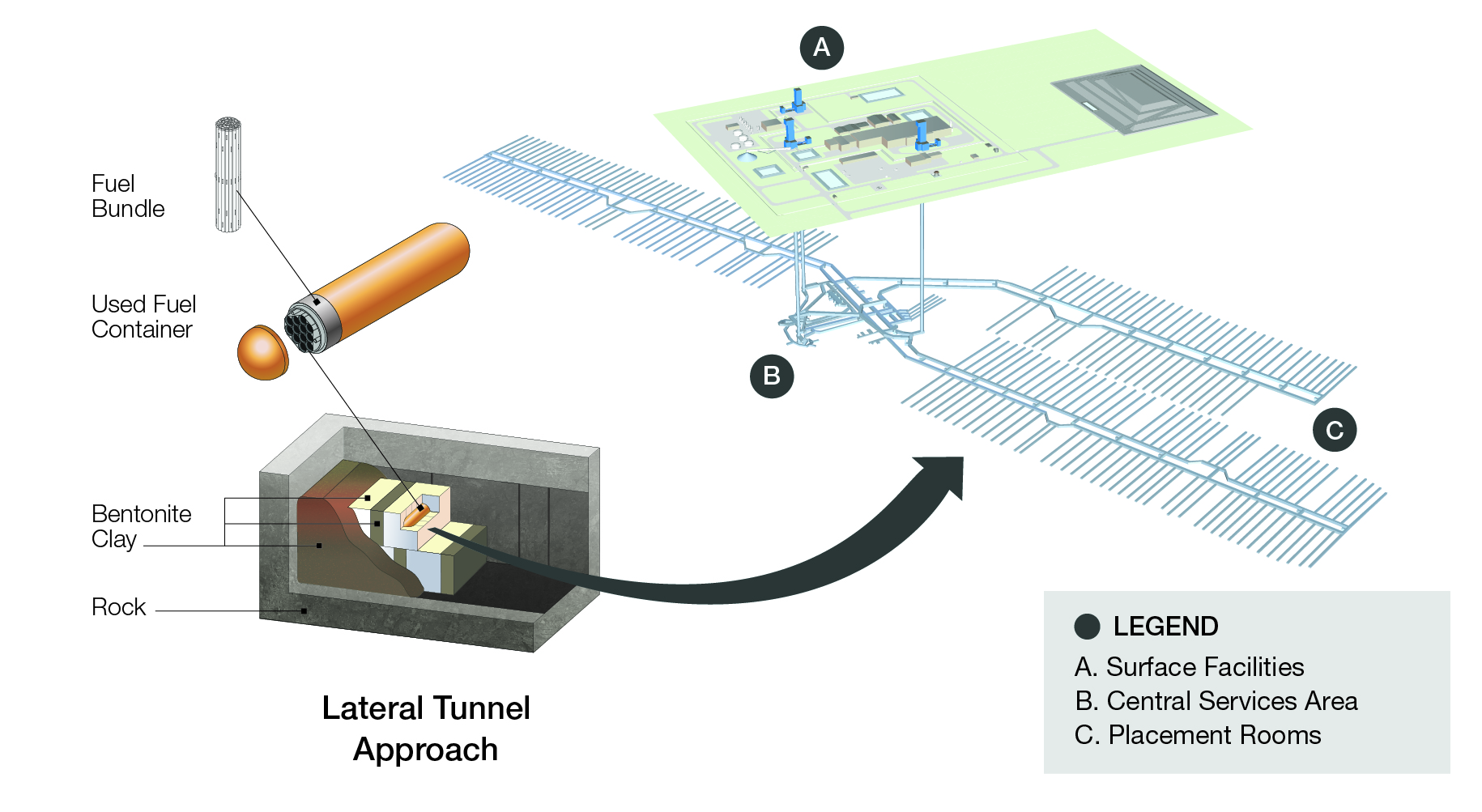The Environmental Impact of Engineered Materials Degradation in Porous Consolidated Media

Nuclear power provides 60% of Ontario electricity and is an important low-carbon energy supply. While it is greenhouse gas-free, “used nuclear fuel” is a hazardous waste that requires careful management. Recognizing that the waste must be isolated from people and the environment for upwards of 1 million years, the Nuclear Waste Management Organization (NWMO) is developing and implementing a strategy for its safe, permanent disposal. NWMO’s 3-year dialogue with more than 18,000 Canadians, including technical specialists, the public, and Indigenous Peoples, established that waste should be buried in a deep geologic repository (DGR) at a depth of about 500 m in a willing and informed host community. To contain and isolate radionuclides, the DGR will include an engineered barrier system comprising metallic used fuel containers surrounded by consolidated bentonite clay. While a DGR is consistent with scientific principles and international best practices, it must be properly designed to ensure that the environment does not induce degradation of the engineered materials. Among degradation mechanisms, container corrosion processes are potentially the most harmful, as they could lead to release of radionuclides into the environment in the event of container failure. This project brings together nine academic researchers from four Ontario universities with diverse expertise in metallurgy, electrochemistry, corrosion science, thermodynamics, hydrogeology, mineralogy, microbiology, synthetic chemistry, and computer modeling to understand the complex interactions that can lead to degradation of engineered materials. Researchers will investigate the biological and chemical processes that lead to production of corrosive species in consolidated media (Objective 1), the different reaction mechanisms that cause corrosion on metallic surfaces (Objective 2), and the transport of corrosive species through consolidated media (Objective 3). The interdisciplinary collaborations proposed are the only way to achieve a comprehensive, holistic, and predictive assessment of the DGR that integrates the interdependencies of these processes. The strong interest and partnership with NWMO ensure that results from this program will have direct and immediate uptake to refine engineering designs. The economic impact of the $23.6 billion DGR will include thousands of direct and indirect jobs involving scientists, engineers, tradespeople, and others for decades in Ontario. The innovative research proposed within this project to predict and understand the impact of corrosion will be crucial for demonstrating safety of the engineered barrier system. While the DGR design is used as a model system in this work, the innovative approaches will also be relevant for predicting the environmental impact of engineered materials degradation in other porous consolidated media, such as buried oil and gas pipelines.
This research is supported by the Ontario Research Fund Research Excellence (ORF RE) program.

